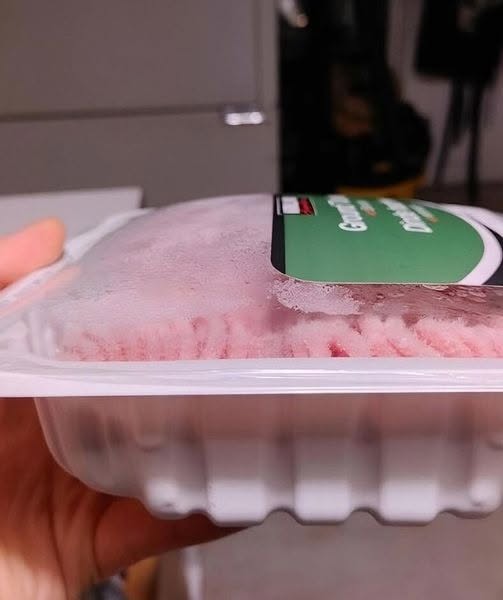📦 Unpacking the Issue of Bloated Food Packaging
Bloated food packaging is more than just an odd sight at the grocery store or in your pantry — it’s often a signal. Whether it’s a bag of chips puffed up like a balloon or a vacuum-sealed meat pack that looks like it’s going to burst, bloating in packaging can point to a range of important food safety and quality concerns.
⚠️ What Causes Packaging to Bloat?
1. Gas Production from Bacterial Activity
-
Spoilage bacteria or pathogens (like Clostridium botulinum or Listeria) can produce gases (CO₂, methane) as they multiply.
-
This gas accumulates inside sealed packages, causing them to swell.
-
Most common in: deli meats, seafood, dairy, and prepared meals.
2. Fermentation or Enzymatic Activity
-
In some cases, natural fermentation (intentional or accidental) can release gas.
-
For instance, if fruit or dough products begin to ferment, they may release CO₂.
3. Packaging or Sealing Issues
-
Temperature fluctuations during transport or storage can create internal pressure.
-
Overfilling or poor vacuum sealing can also trap air.
4. Modified Atmosphere Packaging (MAP)
-
Some foods (like chips or salad greens) are intentionally packed with gases like nitrogen to:
-
Prevent spoilage
-
Reduce oxidation
-
Extend shelf life
-
-
This is safe, and the bloating here is normal and controlled.
🧪 How to Tell If It’s a Spoilage Issue vs. Safe Packaging
| Symptom | Likely Cause | Safe to Eat? |
|---|---|---|
| Bloated meat or seafood pack | Bacterial spoilage or gas buildup | ❌ Discard |
| Puffy dairy product | Possible microbial activity | ❌ Discard |
| Bloated canned goods | Botulism risk | ❌ Danger zone |
| Puffy chip/snack bag | Nitrogen flushing (MAP) | ✅ Safe |
| Yogurt cup domed on top | Mild fermentation or mishandling | ⚠️ Smell & check |
| Salad clamshell slightly bloated | Nitrogen or CO₂ in MAP | ✅ Usually safe |
🧼 What to Do If You Find Bloated Food
-
Don’t open suspicious bloated packages—especially canned goods (botulism risk).
-
Check expiration date and smell/look carefully for dairy or refrigerated items.
-
Report bloated food to stores or brands, especially if it’s a repeated issue.
-
Avoid consuming if in doubt—spoilage often occurs before visible mold or odor develops.
🛡️ How to Prevent It (As a Consumer)
-
Store food at correct temperatures.
-
Avoid leaving cold items in the car or at room temp too long.
-
Check for damage or swelling before buying packaged foods.
-
Follow use-by dates closely for perishable products.
🧠 Final Thought:
While not all bloated packaging means danger, it’s often your food’s way of warning you. Learning to tell the difference between protective packaging and microbial spoilage helps you make smarter, safer food choices.
Would you like an infographic version of this for easy sharing or a printable consumer checklist?
